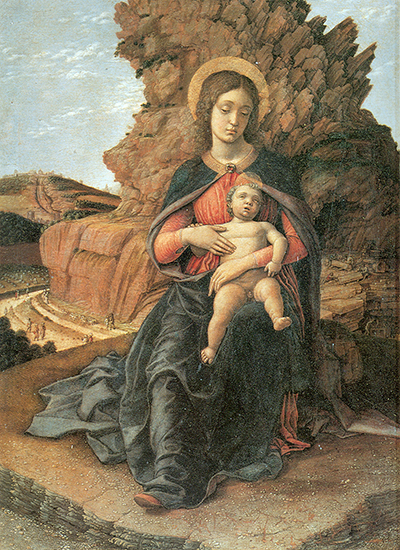Andrea Mantegna is an Italian renaissance artist who worked on the portrait of Madonna of the caves from 1488 to 1490. He painted this art on medium called tempera on panel.
This was a unique painting as he used a technique that was different from early paintings that was being done by other artists who were using oil paint to create their work. Madonna of the caves is a great painting that was created on a canvas that measures about 32 cm by 29.5 cm. He used skills that some of them he had gotten from his father in law Jacopo Bellini who was a great painter of his time.
The portrait name is gotten from the quarry stone on the background. This right handed stone background shows where labourers remove slabs, statue, create a tomb, and also where a column shaft can be found. These typically illustrated how Christ life would end and later he would be buried in a tomb. The virgin carrying a child is sitting on a rock it signifies Christ summit of Calvary. On the other side there are paintings that show a road leading to a far city that is surrounded with a wall. Shepherd is taking care of the flock; farmers are seen busy collecting hay from their farms, and a painting of a castle. All these painting had significant meaning in the life of the child that is being carried by the virgin.
The art got some critics from two artists Fiocco who related the landscape with Carrara and Kristeller saw that Andrea Mantegna painted Monte Bolca which is a natural landscape found between Verona and Vicenza. Others interpreted it from a religious perspective saying that the art background was a symbol of redemption: as it was painted dark on the right and light on the left. It would be through the child being hold and the Christians and the virgin would be the mother of the two.
Madonna of the caves was created when Mantegna was still in Rome. This information is clearly stated in a collection of Giorgio Vasari's description of Francesco I de' Medici’s. Andrea arts are challenging to date because of his style in art of using natural background like rocks. The art is thought to be commission by Lorenzo de' Medici but to date is housed in Uffizi Gallery in Florence Italy.




